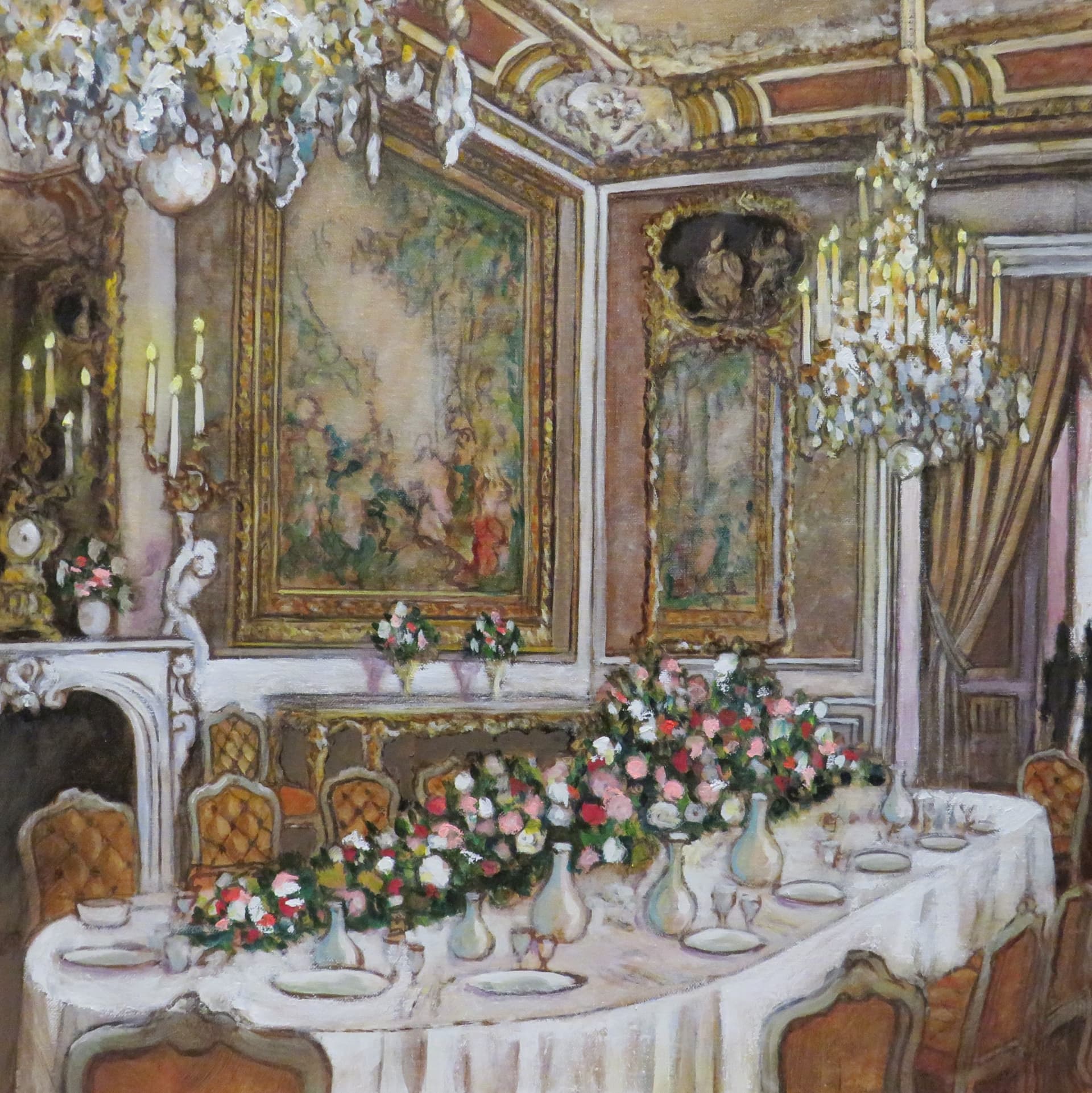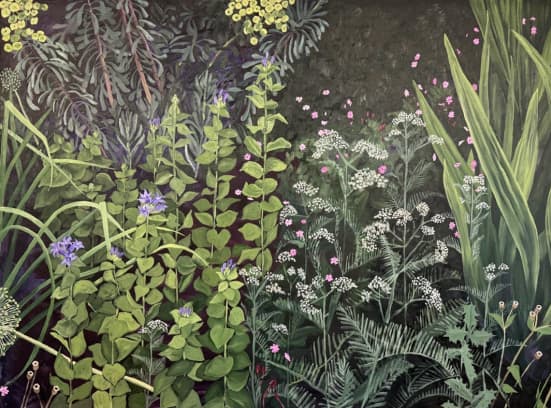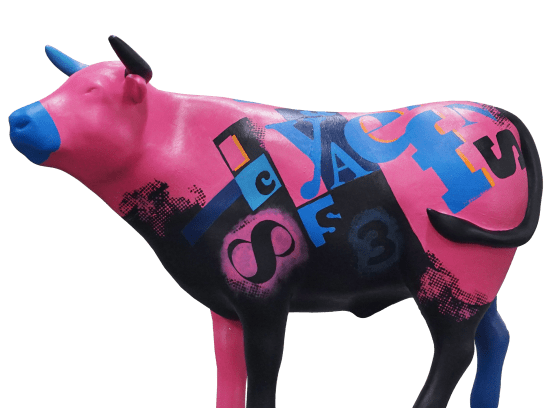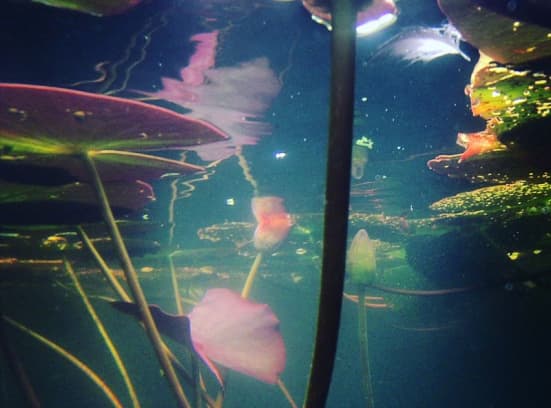England is renowned for its historic houses, interiors resplendent with style and sophistication. It’s opulence and luxury to admire, and to which we can aspire, to visit as a ticketed guest and to enjoy in the period dramas on our screens.
You have a chance, however, to pick up a piece of this splendour during Oxfordshire Artweeks – the county’s open studios and pop-up exhibition event that runs from 1-23 May with both 250 venues to visit and 500 virtual venues. For the festival, artist Paul Minter is to present a new series of sumptuous oil paintings of the interiors of stately homes, transporting you to glittering places to populate the imagination; empty gilded rooms which would make wonderful backdrops for historical dramas. Paul trained in theatre design at the Central School of Art and Design, London and worked in Film and TV as a designer for twenty years.
“The Covid 19 pandemic made it impossible to travel and to visit the places that we love. For me, historic houses have always been a passion and I spend my days off visiting them.” Over the last year, whilst unable to visit them, instead Paul painted these glorious interiors he would have liked to have been able to stroll through in person, capturing their essence rather than copying every detail.
In Paul’s pieces, it is possible to imagine that you are looking at a photograph until you look again closely and see that the paint is all loosely applied and impressionistic: much of the detail is merely implied.
“Art is about memory,” says Paul. “It is a way of capturing a fleeting moment and preserving it, sharing emotions and memories with others. I have discovered, like Charles Ryder in Brideshead Revisited, that I have an aptitude for painting interiors. I try to capture the special atmosphere in these places that I love.”
“Country House interiors inspire me to live a life surrounded by beautiful things,” he smiles. When you see these images you see what makes me tick. They are perhaps, like all paintings, actually self-portraits!”
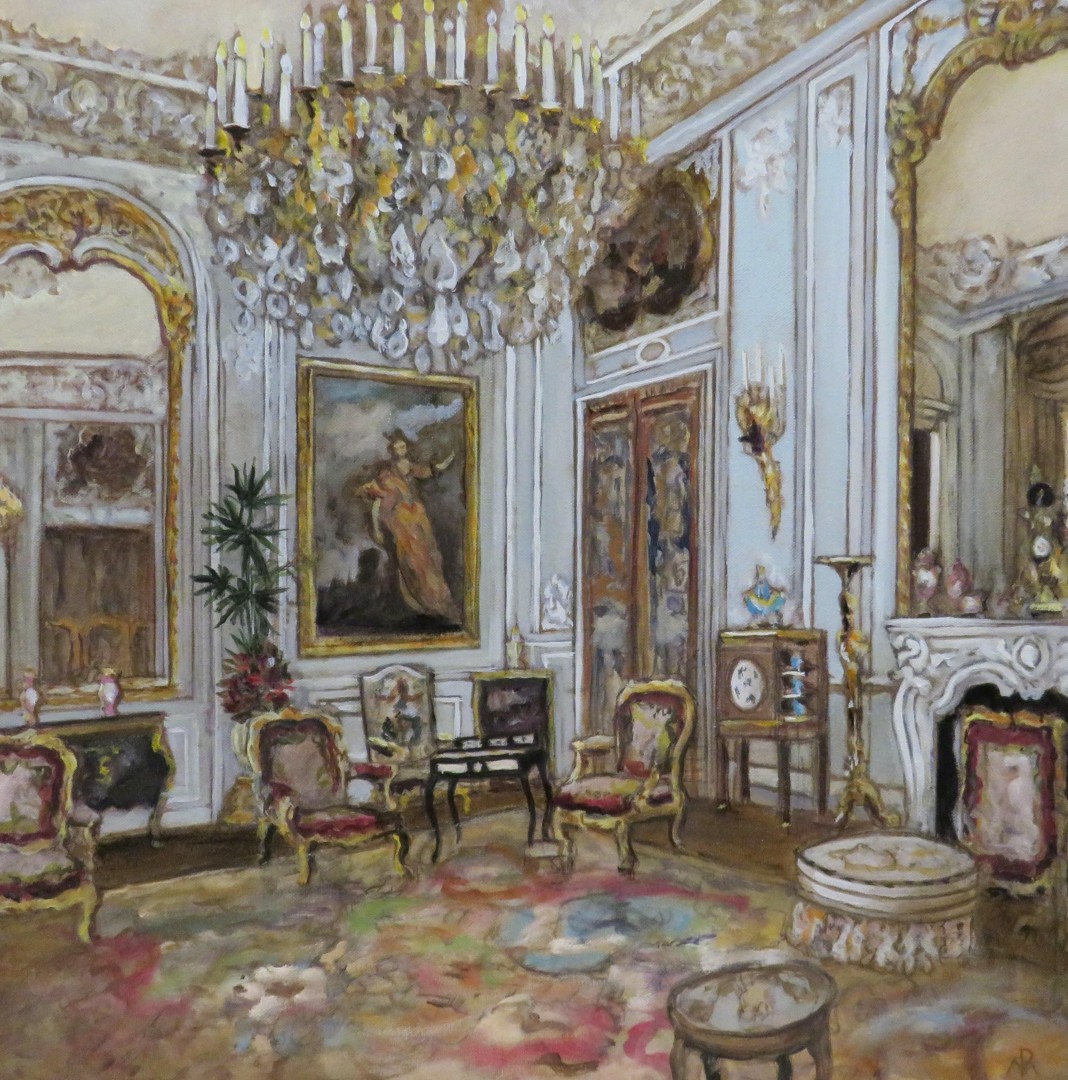
Grey Drawing Room at Waddesdon Manor
As the viewer tours some of the stately homes of the UK with Paul, the table is set in Felbrigg Hall, Norfolk; ancestral portraits peer down from the walls of Wilton House, Salisbury, and a chandelier sparkles in the Grey Drawing Room at Waddesdon Manor. “One aspect of historic interiors that interests me as a painter,” explains Paul, “is the use of artificial light. Chandeliers are particularly tricky to paint. Illuminated bulbs or candles emit a warm light that is reflected by cold crystal droplets. The metal armature of the chandelier has structure and solid geometry that is difficult to understand yet the whole thing has an ethereal quality.”
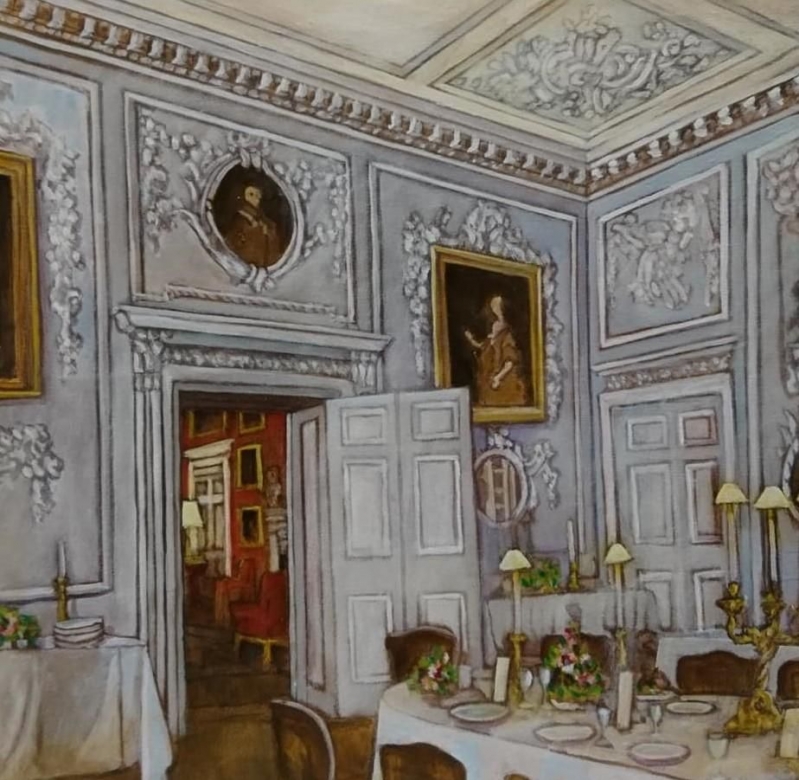
Felbrigg Hall
The Waddesdon Manor Dining Room is a synthesis of eighteenth-century elements combined with late nineteenth-century opulence, the epitome of Rothschild style. For many years now it has been presented with the curtains drawn and blazing candles reflected in the mirrors and the polished marble walls. Here the floral display created for the visit of Queen Victoria takes centre stage. This is probably the most photogenic interior in the house and in all its guises it is absolutely stunning,” he continues.
“Over in Norfolk, The Holkham Hall State Bedroom is another truly magnificent room and I can scarcely think of a bedroom that I like more. The room is hung with dark rich tapestries and insulated from reality. It is a warm and comfortable space that glitters by the golden glow of its many lamps.”
Another painting in Paul’s new collection shows Holkham Hall Library which is still part of a private apartment rather than a stateroom. Here the fine architecture of William Kent and a great collection of books provides a sumptuous background for comfortable living. Sofas in pools of lamplight surround the fireplace, and looking at the painting, the viewer half expects a drama to unfold as Hercule Poirot steps ‘on set’ and unravels a mystery.
As The Grand Tour continues over in Europe, visitors to his exhibition will also be transported to the Salon de la Paix in Versailles, to the Doge’s Palace in Venice and to the Garden Pavilion at the Amalianberg Nymphenburg Palace in Munich, famous for its silvered rococo hall of mirrors which were designed in 1739 by Francois de Cuvillies, the court dwarf and a talented architect.
Last year Paul painted gardens, focusing on those patches where gardens merge into the surrounding landscape. These paintings were also about dusk and early morning sun, just as, this year, Paul’s interiors often have an ‘evening’ flavour, that moment when you settle down, turn on the lamps and light the fire; and in Marie Antoinette’s Boudoir at Fountainbleu, the fire is already glowing: “The room is gold, silver and mother of pearl. Decorated in the classical style of Pompeii and Herculaneum, it was the height of luxury in the eighteenth century. I wanted to capture its shimmering surfaces in paint.” says Paul.
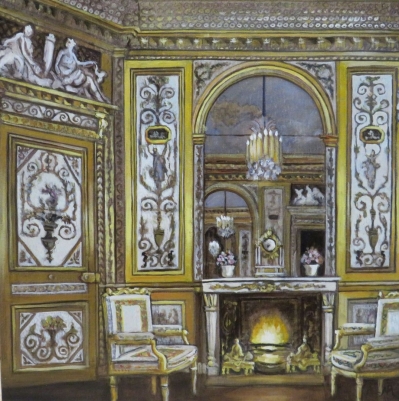
Marie Antoinette’s Boudoir
As a whole, the collection is enchanting. Individually, each picture is poised to add a touch of splendour and magic to any contemporary home, a window to – for most of us – another world!
For Artweeks Paul Minter is one of fourteen artists exhibiting at the ancient Peach Croft Farm Barn in North Abingdon (Artweeks venue 176), where art ranging from embroidered wall art to pottery and silver jewellery will be available to browse and buy.
The artists have also each responded to the book, The Silent Weaver by Roger Hutchinson in which the protagonist Angus, damaged by his experiences in WW2, living in an asylum and unable to return to his beloved island, took to twisting long grass to make ropes, as crofters do in the Hebrides: these he knitted or wove them into fantastic garments, adding in leaves and flowers. Late in his life, this was recognised as art.
The Peach Croft Barn artists challenged themselves to create a piece of work using only the materials they have to hand during the lockdown earlier this year, and reflecting their experiences and compulsions. These objects include cloth dolls, a jellyfish made of waste plastic, a musical instrument made from an old ‘Wavemeter Spares’ box and a bouquet of flowers made from beer tins: they will be exhibited alongside the artists’ usual work.
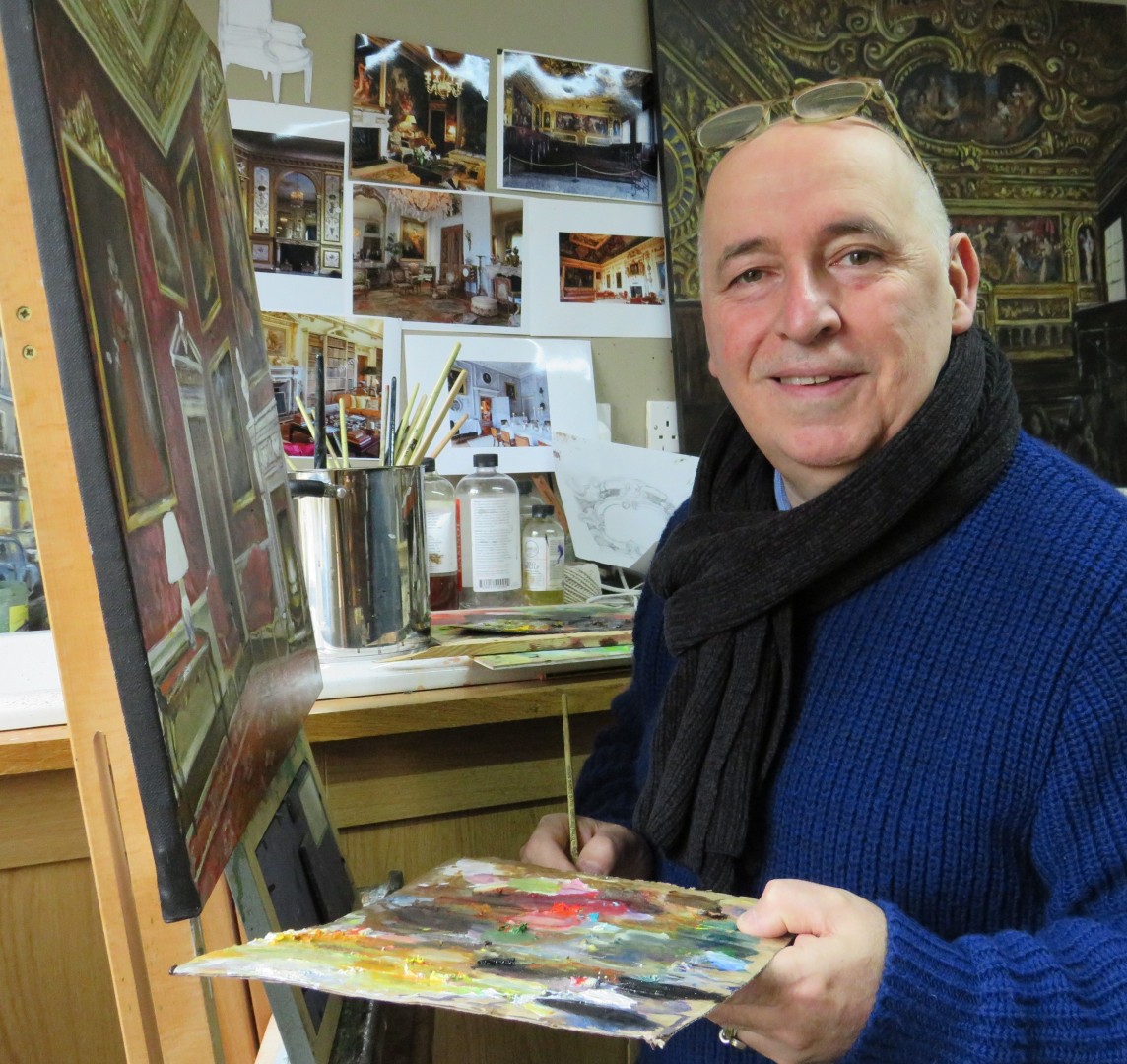
You can see more of Paul’s paintings at paulminter.com
For more on the rest of the Artweeks artists and venues visit artweeks.org where you’ll find details of 250 COVID-secure venues – including pop-up shops, gardens and community venues – and 500 virtual exhibitions and studios.
